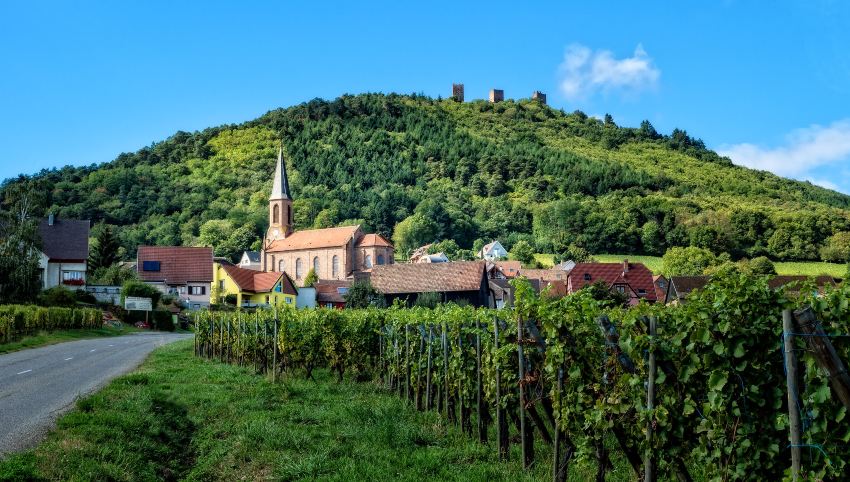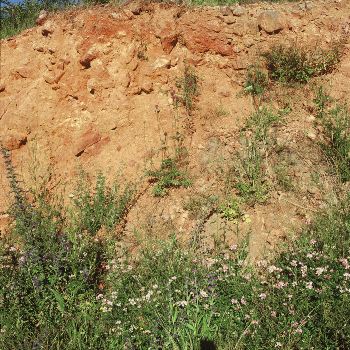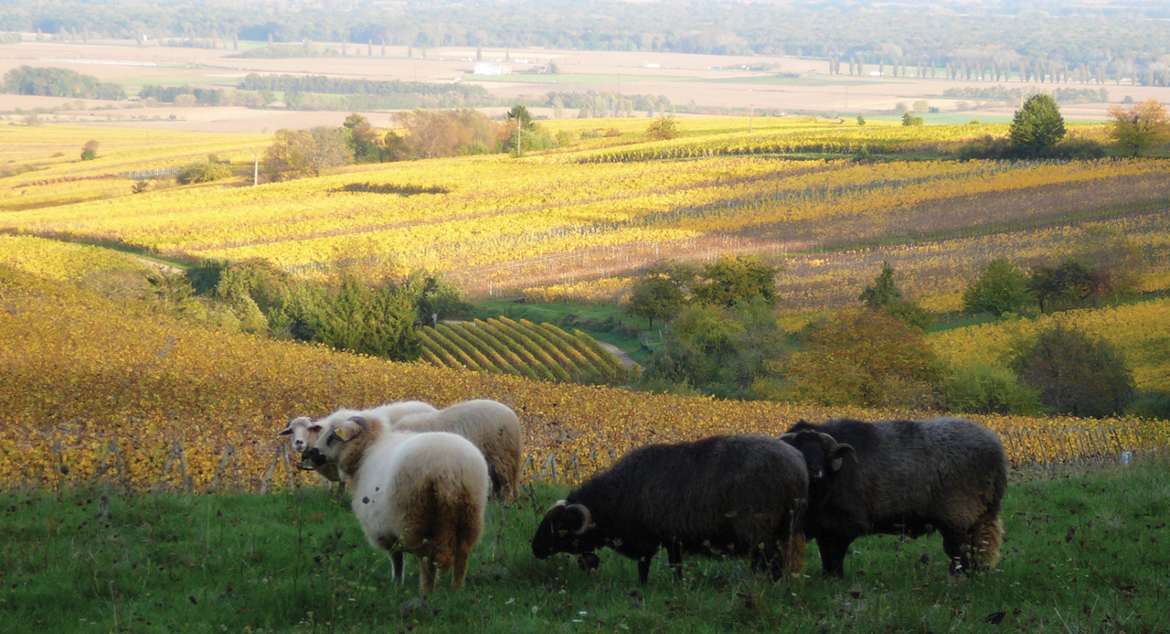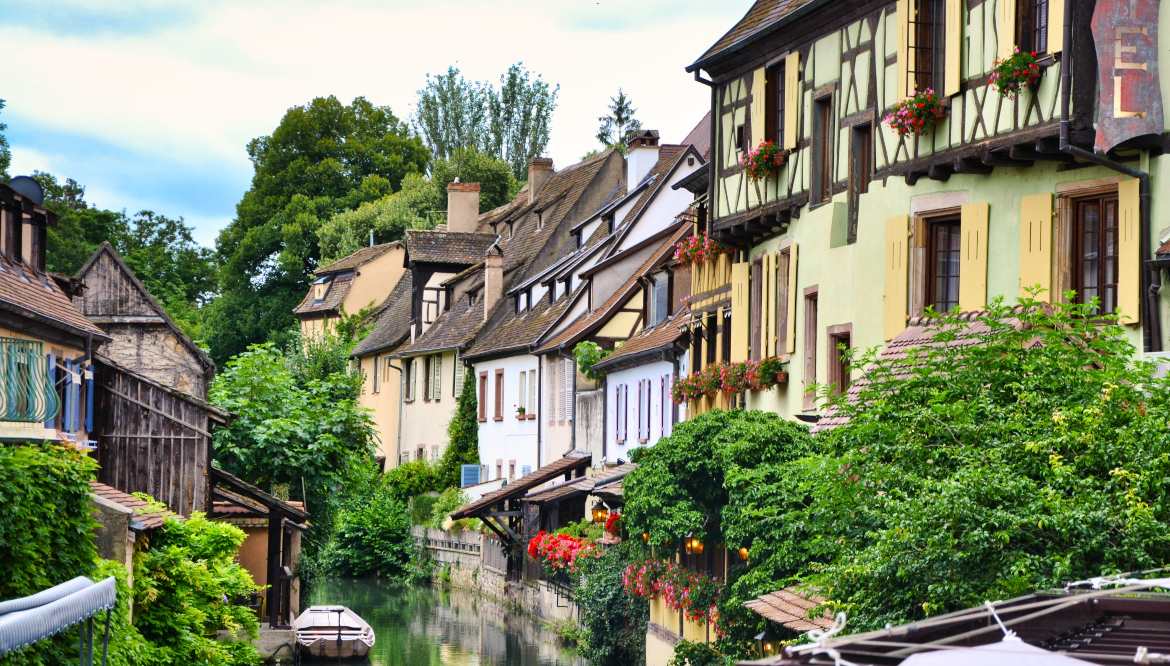Lychee, rose petals, honey, orange blossom, ginger, and bergamot are some of the adjectives used to describe Gewürztraminer wine. Its name comes originally from the German gewürz, which means “spicy.” Yet for me, this wine is not so much spicy as it is perfumed and very floral.
Gewürztraminer comes from the village of Tramin, located in northern Italy’s Alto Adige region, where it is known as Tramino Aromatico. According to ampelographer Pierre Galet, it is a mutation of Savagnin Rosé. Gewürztraminer belongs to the group of aromatic grapes. We can consider this grape an extrovert, always forcing you to pay attention; this is due to its intense and unique nose that jumps out of your glass and makes it super easy to identify, even when tasting this blind.
Where to Find the Best Gewürztraminer Wines
The three best places to find Gewürztraminer are in Alsace (France), southern Germany, and Trentino-Alto Adige (Italy). All these spots have one thing in common: they are cool but sunny places, which is exactly what this grape needs. Too much sun or heat will sweep away Gewürztraminer’s acidity and its fine aromas. For this reason only, it is not planted in warm climates—meaning, most of the New World. It buds early, so it’s susceptible to frosts and viruses, and it ripens in mid-season, preferring to mature very slowly. It also suffers from uneven ripening, which can seriously affect yields.

In Alsace, Gewürztraminer is considered one of the four noble varieties, next to Riesling, Muscat, and Pinot Gris. There, it yields full-bodied wines with more alcohol than their German or Italian counterparts. In Germany, it does best in the southern appellations of Pfalz and Baden, where it’s warmer than in the Mosel. And of course, it does very well in its birthplace of Alto Adige, where wines tend to be lighter and more acidic than Alsatian styles.
In the New World, we must stick to a few cool climate spots. New Zealand is a good match, with good wines coming from Gisborne, Hawkes Bay, and Marlborough. In Australia, there are good spots in Tasmania and Victoria. In California, it can do well in Monterey, Sonoma, Mendocino, and in the Russian River Valley (all places that enjoy the cool Pacific Ocean influence). Good expressions can be also found in Oregon and Washington states.
Soils and Styles

Gewürztraminer prefers well-drained soils with plenty of minerals, especially limestone. Different soils will affect the color of its skins: limestone yields pink-skinned grapes, while gravel yields purple-skinned grapes. It’s a very vigorous variety, so its yields must be kept very low, with serious pruning.
Stylistically, Gewürztraminer produces full-bodied whites with high alcohol: it is easy to find wines with 14.5% and higher alcohol levels (especially for a white wine, those are serious numbers!). Acidity is usually low or balanced, which is why malolactic fermentation is avoided in an effort to keep the wines fresh. Wines can be dry, although the floral nose might tempt you to think otherwise, as well as off-dry and even sweet. Therefore, if you strongly prefer dry over sweet wines or vice-versa, make sure to ask your wine store clerk before you make your purchase.
Wines marked as SGN (Sélection de Grains Nobles) or VT (Vendange Tardive) are categories designated as dessert wines and are always sweeter styles. This is due to the extra hang-time these grapes get to make these special wines. The grapes of VT wines undergo passerillage, or the process of grapes dehydrating while still hanging on the vine; and the grapes for SGN wines progress to noble rot, concentrating the aromas, flavors, and sugars even further.
Because of Gewürztraminer’s fine and intense aromatics, most wineries avoid oak aging, which could overpower the aromas.
These wines are designed to be consumed young, but best samples can age for up to 10 years. Late harvest wines (Vendange Tardive) or Sélection de Grains Nobles can age for much more (20 years+), helped in part by the sugar content.
I’m such a girly girl—I admit it, I love floral wines! One great example I’ve tried recently is Domaine Zind-Humbrecht Gewürztraminer 2020 from Alsace, France. It showed a textbook Gewürztraminer nose filled with red grapefruit, spicy ginger, and rose petals. Its body was medium-plus and the wine was very flavorful, featuring a mineral-laden finish. The wines of Domaine Zind-Humbrecht are made from biodynamically grown grapes.





